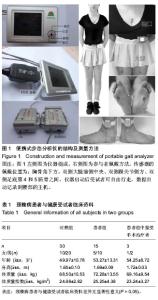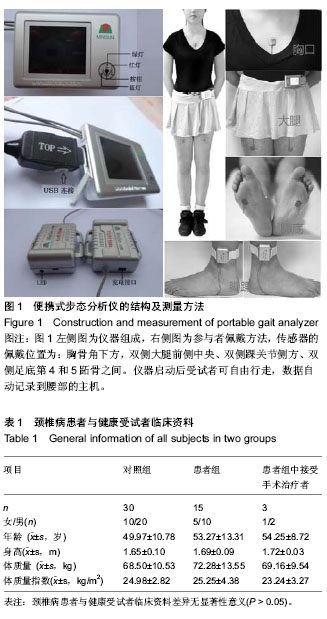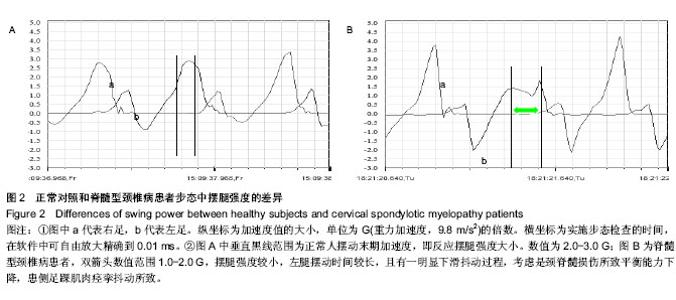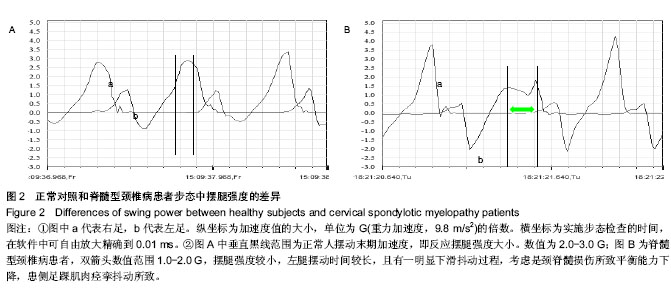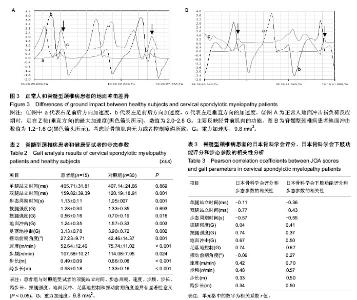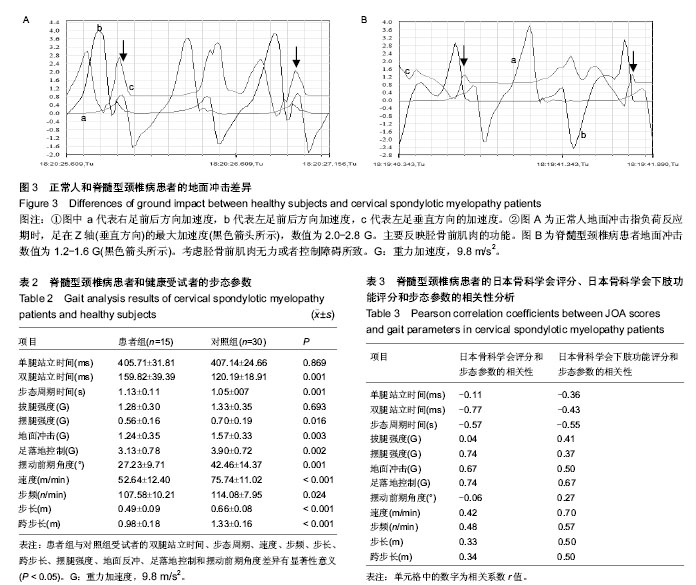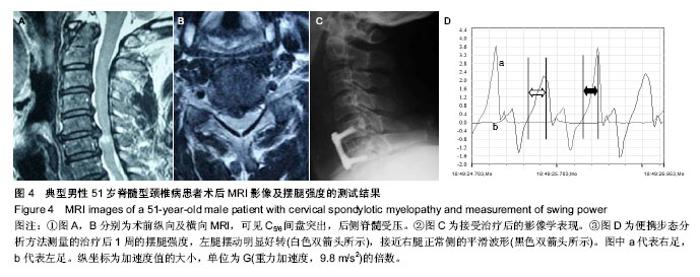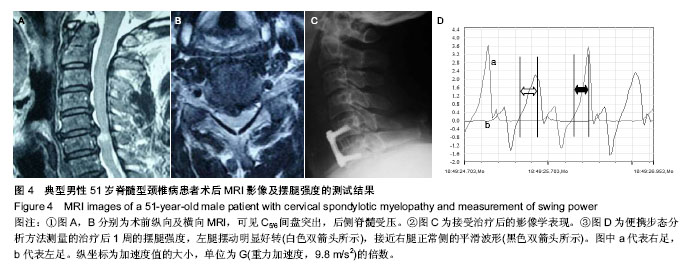| [1] Kuhtz-Buschbeck JP, Jöhnk K, Mäder S, et al. Analysis of gait in cervical myelopathy. Gait Posture. 1999;9(3):184-189.[2] Tracy JA, Bartleson JD. Cervical spondylotic myelopathy. Neurologist. 2010;16(3):176-187.[3] Edwards CC 2nd, Riew KD, Anderson PA, et al. Cervical myelopathy. current diagnostic and treatment strategies. Spine J. 2003;3(1):68-81[4] Harrop JS, Hanna A, Silva MT, et al. Neurological manifestations of cervical spondylosis: an overview of signs, symptoms, and pathophysiology. Neurosurgery. 2007;60(1 Supp1 1):S14-20.[5] Suzuki E, Nakamura H, Konishi S, et al. Analysis of the spastic gait caused by cervical compression myelopathy. J Spinal Disord Tech. 2002;15(6):519-522.[6] Kim CR, Yoo JY, Lee SH, et al. Gait analysis for evaluating the relationship between increased signal intensity on t2-weighted magnetic resonance imaging and gait function in cervical spondylotic myelopathy. Arch Phys Med Rehabil. 2010;91(10):1587-1592. [7] 赵德伟,崔大平.全髋关节置换手术前后三维步态分析[J].中华外科杂志,2009,47(2):132-135.[8] 孙嘉利,唐丹,钟世镇.三维步态分析的研究与应用[J].中国组织工程研究与临床康复,2007,11(5):944-948.[9] Mayagoitia RE, Nene AV, Veltink PH. Accelerometer and rate gyroscope measurement of kinematics: an inexpensive alternative to optical motion analysis systems. J Biomech. 2002;35(4):537-542.[10] Chan M, Estève D, Fourniols JY, et al. Smart wearable systems: current status and future challenges. Artif Intell Med. 2012;56(3):137-156. [11] 赵松,陈云苏,张先龙.步态分析技术在人工髋关节置换术中的应用[J].中华骨科杂志,2010,30(7):700-703.[12] 赵辉,吴海山.步态分析在全膝关节置换手术中的应用[J].中华骨科杂志,2010,30(6):630-634.[13] Maffiuletti NA, Gorelick M, Kramers-de Quervain I, et al. Concurrent validity and intrasession reliability of the IDEEA accelerometry system for the quantification of spatiotemporal gait parameters. Gait Posture. 2008;27(1):160-163. [14] Mackey AH, Stott NS, Walt SE. Reliability and validity of an activity monitor (IDEEA) in the determination of temporal-spatial gait parameters in individuals with cerebral palsy. Gait Posture. 2008;28(4):634-639. [15] Zhang K, Werner P, Sun M, et al. Measurement of human daily physical activity. Obes Res. 2003;11(1):33-40.[16] Lester DK, Zhang K. Gait analysis of knee arthritis treated with hyaluronic acid. J Arthroplasty. 2010;25(8):1290-1294. [17] Lester DK, Shantharam R, Zhang K. Dynamic electromyography after cruciate-retaining total knee arthroplasty revealed a threefold quadriceps demand compared with the contralateral normal knee. J Arthroplasty. 2013;28(4):557-562. [18] 魏梅洋,贾连顺,李家顺.颈椎病脊髓功能的神经学评价[J].颈腰痛,2003,24(3):180-182.[19] Lin LI. A concordance correlation coefficient to evaluate reproducibility. Biometrics. 1989;45(1):255-268. [20] Hukuda S, Mochizuki T, Ogata M, et al. Operations for cervical spondylotic myelopathy. A comparison of the results of anterior and posterior procedures. J Bone Joint Surg Br. 1985;67(4):609-615. [21] Hirabayashi K, Miyakawa J, Satomi K, et al. Operative results and postoperative progression of ossification among patients with ossification of cervical posterior longitudinal ligament. Spine (Phila Pa 1976). 1981;6(4):354-364. [22] Nurick S. The pathogenesis of the spinal cord disorder associated with cervical spondylosis. Brain. 1972;95(1): 87-100. [23] Bauer BL, Brock HCM, Klinger M. Cerebellar Infarct. Midline Tumors. Minimally Invasive Endoscopic Neurosurgery (MIEN). Berlin: Springer Heidelberg,1994.[24] 白一冰,王岩,肖嵩华,等.脊髓型颈椎病JOA指数的客观和精确信度调查[J].中国临床康复,2005,9(2):11-13.[25] Perry J, Burnfield JM. Gait Analysis: Normal and Pathological Function. 2nd ed. Thorofare, NJ, USA: SLACK Incorporated, 2010:551. |
